I am drawing a simple path in iOS 5 with Core Graphics:
CGMutablePathRef path = CGPathCreateMutable();
CGPathMoveToPoint( path, NULL, center.x , topMargin );
CGPathAddLineToPoint(path, NULL, center.x+20, topMargin+50);
CGPathAddLineToPoint(path, NULL, center.x , topMargin+40);
CGPathAddLineToPoint(path, NULL, center.x-20, topMargin+50);
CGPathAddLineToPoint(path, NULL, center.x , topMargin );
Now i want to fill it in Overlay mode like so:
[[UIColor colorWithRed:0 green:0 blue:0 alpha:0.4] setFill];
CGContextAddPath(context, path);
CGContextSetBlendMode (context, kCGBlendModeOverlay);
CGContextFillPath(context);
Which gives me exactly the expected result. But next, i want to create an embossed effect. I thought of using a white and a black drop shadow in order to achieve this effect like so:
[[UIColor colorWithRed:0 green:0 blue:0 alpha:0] setFill];
CGContextAddPath(context, path);
CGContextSetShadowWithColor(context, CGSizeMake(1, 1), 1.0, highlightColor);
CGContextSetBlendMode (context, kCGBlendModeNormal);
CGContextFillPath(context);
[[UIColor colorWithRed:0 green:0 blue:0 alpha:0] setFill];
CGContextAddPath(context, path);
CGContextSetShadowWithColor(context, CGSizeMake(-1, -1), 1.0, shadowColor);
CGContextSetBlendMode (context, kCGBlendModeNormal);
CGContextFillPath(context);
The problem is, the shadows are not drawn when alpha is set to 0.
Now the question: Is there a way to draw only the shadows without the fill color but in full alpha? Can I somehow prevent the inside of my path from being drawn? Or is there perhaps a simpler way of drawing two shadows for one path?

